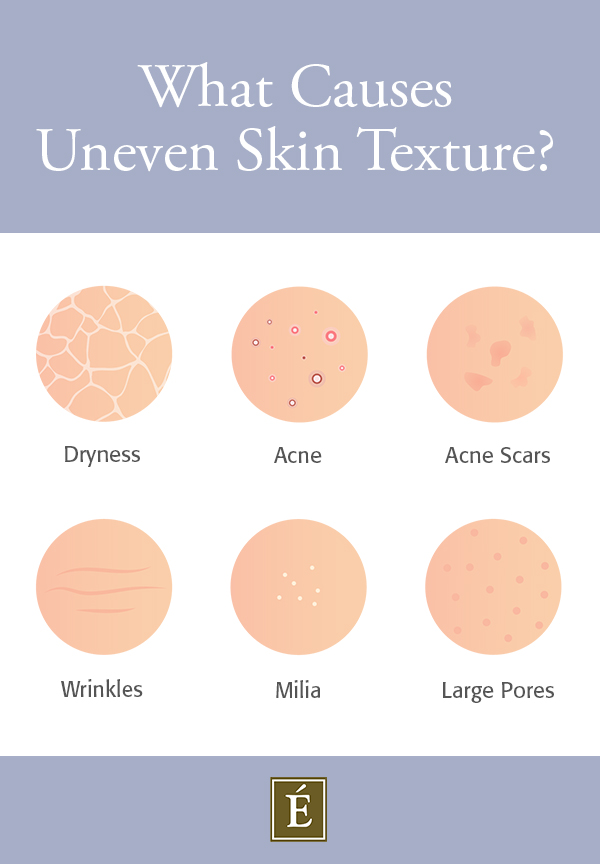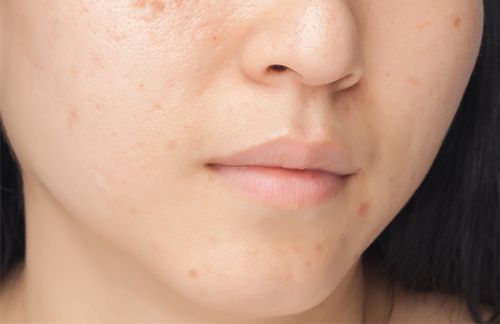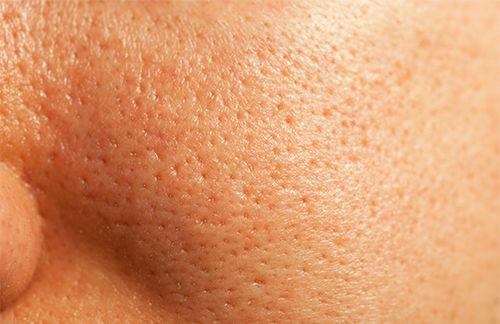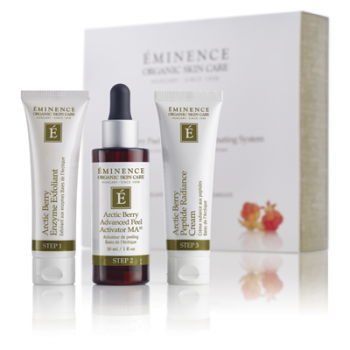
How To Improve Skin Texture
We’re all after skin with a smooth surface, but the reality is that most of us experience uneven skin texture. This common concern can affect all skin types and often presents as a flaky, rough or bumpy complexion. Whether due to acne, aging or pore size, texture issues can leave skin looking flat, dull and less youthful. Here’s our guide to what causes uneven skin texture and how to fix it.
Uneven Skin Texture Causes

Over your lifetime, your skin will go through many changes that affect and alter its surface. These are the most common causes of uneven skin texture:
1. Dryness
Dryness is a common cause of uneven skin texture. Dry skin is characterized by an inadequate supply of oils and lipids, which lubricate the skin and keep its moisture barrier intact. Lacking sufficient moisture, dry skin has difficulty turning over and properly shedding its cells. This causes dead skin cells to build up on the skin’s surface, making it appear rough, flaky and dull.
Smoothing dry skin is as simple as mastering two steps in your skin care routine: exfoliating and moisturizing. Regular exfoliation with a physical or chemical exfoliant sloughs dead cells from the skin’s surface and clears the way for healthy cells hidden beneath. Follow up with a moisturizer that is rich in triglycerides and fatty acids; these beneficial ingredients not only replenish moisture, they also strengthen your skin’s lipid barrier. Together, these steps keep skin soft, smooth and supple for longer.
2. Acne
The most prominent symptom of acne is the change it makes to the skin’s surface. From small raised bumps to large inflamed comedones, all types of blemishes can cause a bumpy and irregular skin texture. Depending on the severity of your acne, these could be isolated to one area or cover your entire complexion.
Acne is triggered by a mix of factors, including excess oil, bacteria, hormones and genetics. One feature of acne-prone skin is that it doesn’t turn over efficiently; pores become congested and the combination of oil, dead skin and bacteria leads to breakouts. Salicylic acid has a long history of treating acne effectively and efficiently. This gentle BHA clears blocked pores, calms angry skin and prevents future breakouts. With regular use, it contributes to a smoother, more even complexion.
Product Picks
Acne Advanced 3-Step Treatment System
3. Acne Scarring
If you’re prone to picking and popping, acne scars may emerge on your complexion. As blemishes heal, your skin elicits an inflammatory response to repair the damaged tissue. This disrupts the production and structure of collagen, causing indented scars to sink into the skin. These typically present as ice pick, boxcar and/or rolling scars that disrupt an otherwise smooth surface.

You can improve the look of acne scars with a two-pronged approach that both resurfaces and plumps your skin’s texture. Look for natural exfoliators like rice flour and lactic acid (an AHA) to refine your skin’s surface as well as ingredients like Vitamin C and botanical hyaluronic acid to improve elasticity and plump your complexion.
Product Picks
Arctic Berry Peel & Peptide Illuminating System
4. Fine Lines & Wrinkles
As you age, your skin’s stores of collagen, elastin and hyaluronic acid deplete. Additionally, skin cell turnover slows and your complexion becomes increasingly dry and rough. Without sufficient structural support, your skin may develop a variety of wrinkles, from crow’s feet and laugh lines to crepey skin and gravitational folds. Each of these affects your skin’s texture, causing its surface to wrinkle and crease.
One way to smooth fine lines and wrinkles is to use skin care formulated with peptides. Eminence Organics Lead Skin Care Trainer Natalie Pergar tells us these complex molecules “trigger the body’s own natural processes to rebuild the longer chain proteins” like collagen and elastin. In stimulating collagen and elastin production, peptides diminish the look of wrinkles and promote firmer, more resilient skin.
5. Milia
Do you have tiny white bumps around your eye area? They could be milia. Often mistaken for acne, these small cysts are actually filled with keratin, a type of protein that is found in skin tissue, hair and nail cells. When keratin builds up, it can become trapped and form small cysts just below the skin’s surface. Milia typically appear in clusters around the eye area but can also emerge on the cheeks and forehead.
While milia will often clear up on their own, persistent cases may require extraction by a licensed professional. It may be tempting to attack milia at home but picking and popping can lead to inflammation, infections and scarring (which will only exacerbate uneven skin texture). A licensed esthetician will use a small blade or needle to make a tiny incision in each milium and release the blockage of keratin.
6. Large Pores
Skin with large pores can take on an orange peel-like pitted texture. Pore size is determined by genetics, but they can become enlarged due to congestion and the aging process. When oil and dirt clog your pores, the diameter of the opening actually expands. As you age and your skin becomes less elastic, it loses the ability to “bounce back,” and pores become even more prominent.

For this type of uneven skin texture, you want to clear congestion and improve elasticity. Chemical exfoliants like alpha hydroxy acids (AHAs) dissolve the “glue” that holds dead skin cells on the skin’s surface and helps to keep pores clean. Follow up with a Natural Retinol Alternative that firms and tightens skin without the irritation of a chemical retinoid. According to Natalie, another way to improve skin texture and dull skin is with an at-home facial. Watch this In The Mix to learn more.
Professional Skin Texture Treatments
In addition to your home care routine, there are several professional-grade treatments that can improve uneven skin texture. If you struggle with acne or skin sensitivity, we recommend consulting with your esthetician before booking a treatment.
Microdermabrasion
Microdermabrasion is a type of physical exfoliation that uses a specialized device to buff away the surface layer of the skin. As dead skin is cleared away, this process reveals new skin cells that look and feel smoother.
Professional Peels
Professional peels are a more powerful and concentrated version of your at-home exfoliant. They deliver a high percentage of active ingredients to break the bonds that hold dead skin cells on your skin’s surface. These peels typically employ fruit acids such as papaya or pineapple which, in addition to exfoliating skin, are rich antioxidants that minimize the look of fine lines and wrinkles.
Dermaplaning
Dermaplaning is another professional treatment that can retexture skin. In this procedure, a medical-grade scalpel is scraped across the surface of the skin to remove a superficial layer of dead skin cells. This offers an immediate brightening and smoothing effect for dull, textured skin.
The Bottom Line
As we've seen, achieving smooth, even skin texture is a common goal, but many factors can cause unevenness, from dryness and acne to aging and large pores. By understanding the root causes and implementing a targeted skin care routine, you can improve your skin’s texture and appearance. Regular exfoliation and moisturizing, along with the use of specific ingredients like salicylic acid, peptides and AHAs, can make a significant difference. For persistent issues, professional treatments such as microdermabrasion, peels, and dermaplaning offer advanced solutions which you can find at a spa.
Looking for even more solutions to smooth your skin’s texture? Visit an Eminence Organics Spa Partner to receive personalized product recommendations from a licensed esthetician.

